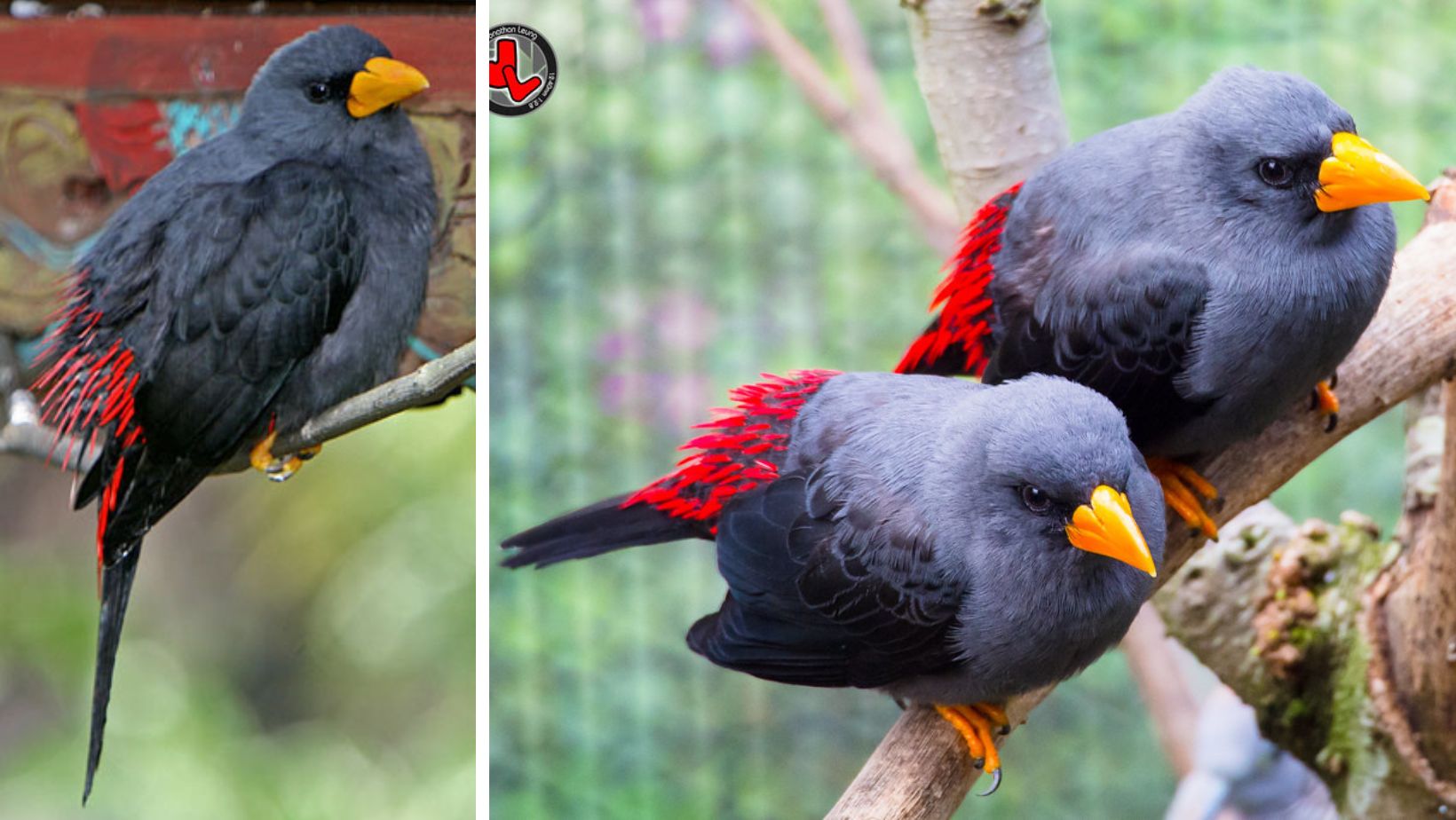
A highly gregarious, vocal bird, With bright red flecks on an otherwise ash-grey body.
Meet the Grosbeak Starling
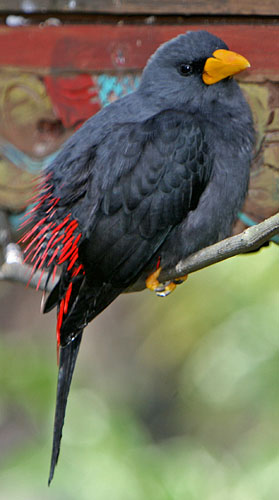 Photo courtesy of http://www.birdphotos.com/CC BY 3.0
Photo courtesy of http://www.birdphotos.com/CC BY 3.0
The Grosbeak Starling (Scissirostrum species) is a distinctive passerine bird, who has the unique status of being the sole member of the Scissirostrum genus. Characterized by dark slaty-grey plumage, the Grosbeak Starling exhibits wings and tail with a darker, almost blackish shade. Its rump, uppertail-coverts, and some feathers on the rear flanks sport long, stiff red tips, sometimes appearing as a duller orange. The strong, bright yellowish-orange bill is striking, complementing the dark grey head with blackish lores. The eyes are dark brown, while the legs and feet display an orange-yellow hue.
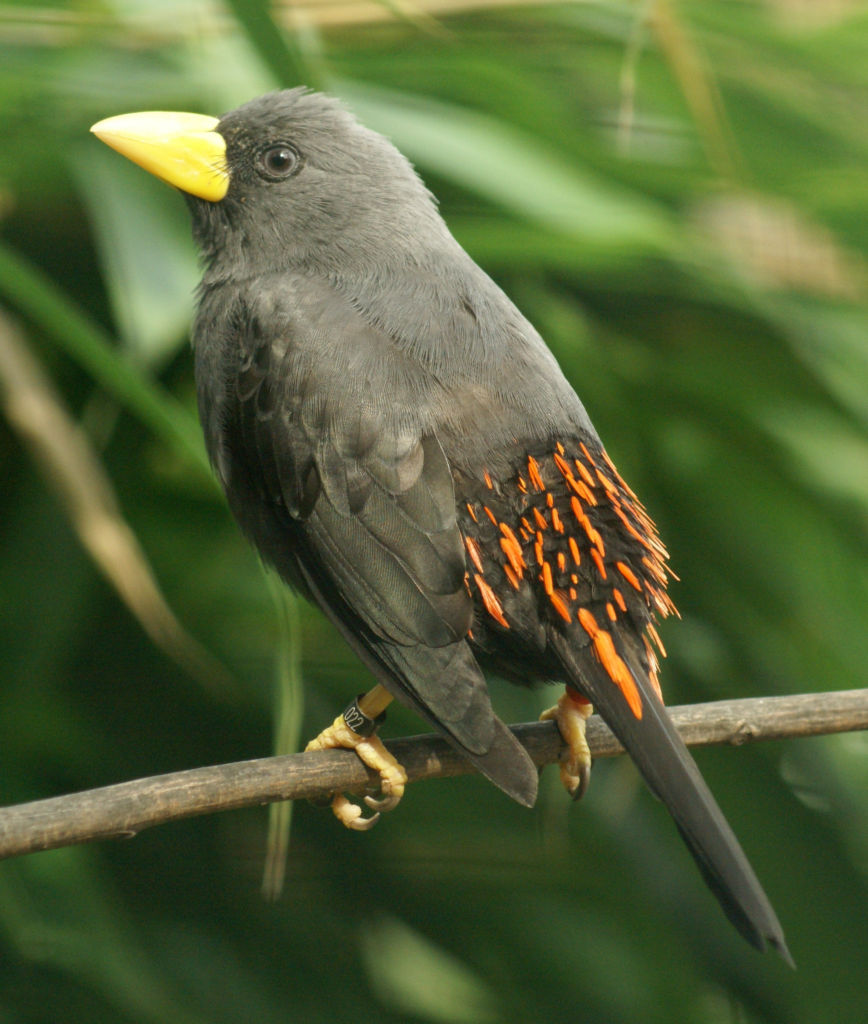 “File:Tiergarten Bernburg Schmalschnabelstar Scissirostrum dubium 2007.jpg” by Tragopan is licensed under CC BY-SA 3.0.
“File:Tiergarten Bernburg Schmalschnabelstar Scissirostrum dubium 2007.jpg” by Tragopan is licensed under CC BY-SA 3.0.
Both males and females possess similar appearances.
Juveniles have a browner tint, with orange coloring to rump and paler bill.
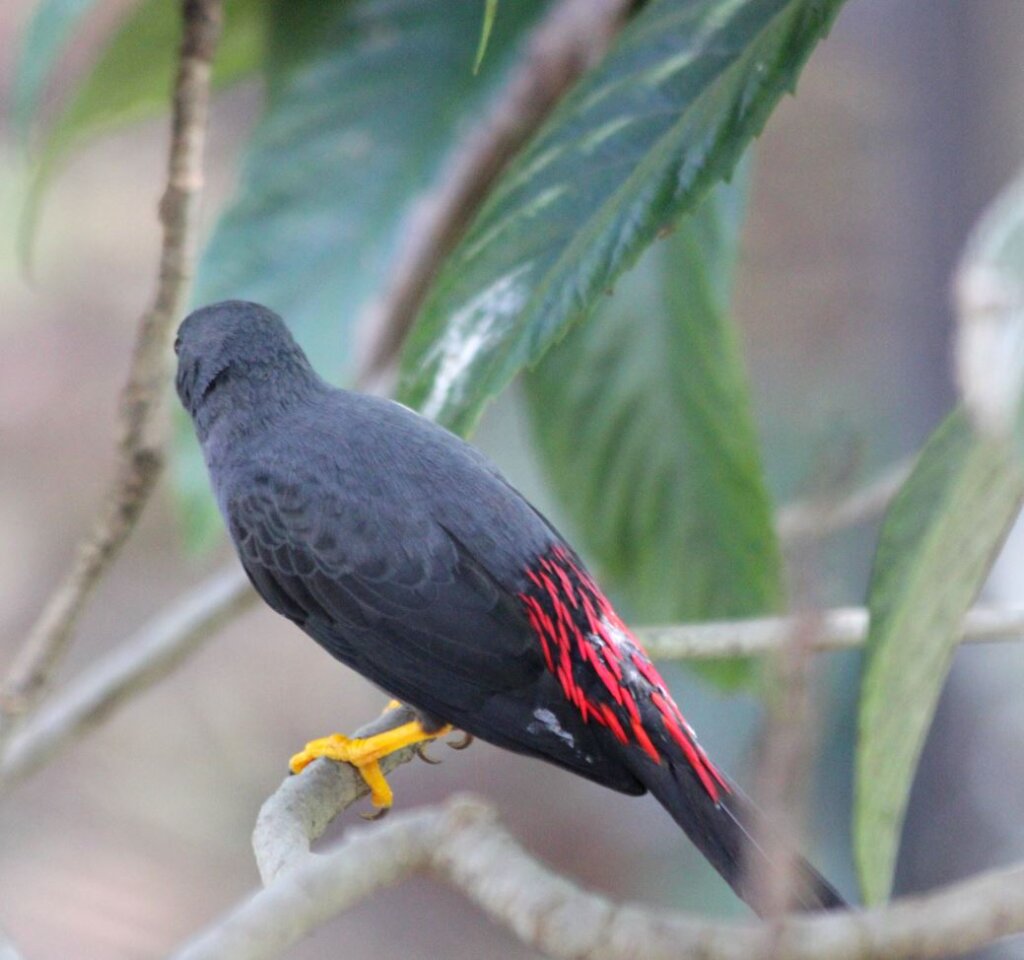 “File:Grosbeak starling (8553505673).jpg” (cropped) by cuatrok77 is licensed under CC BY 2.0.
“File:Grosbeak starling (8553505673).jpg” (cropped) by cuatrok77 is licensed under CC BY 2.0.
Endemic to Sulawesi, this highly social species can be found in flocks where they feed, fly, and breed together.
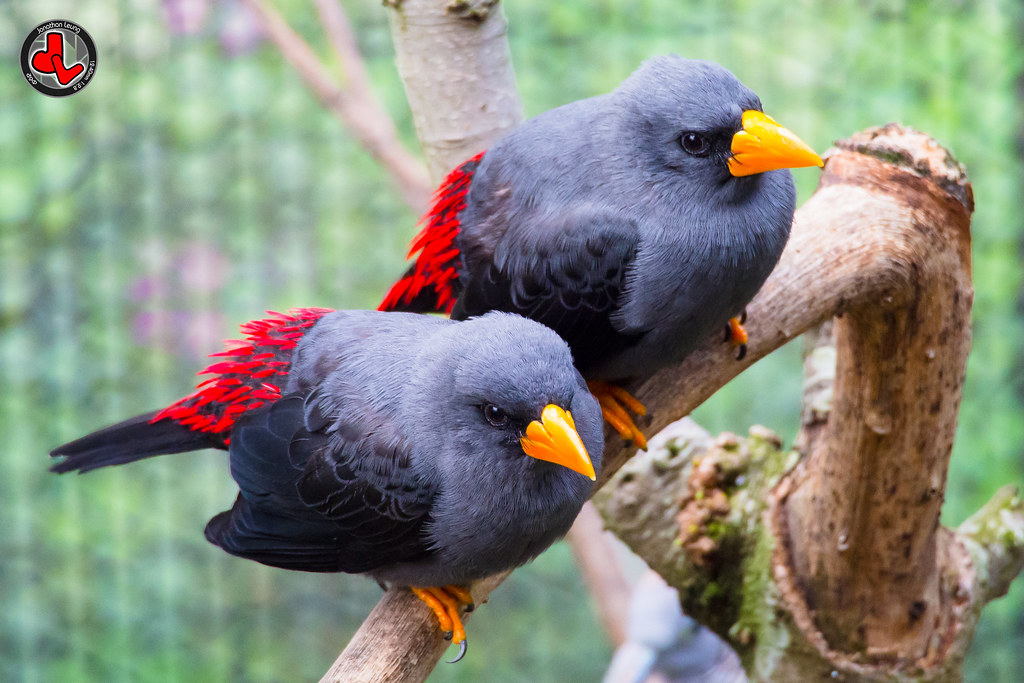 “Grosbeak Starling” by jonathan.leung is licensed under CC BY-SA 2.0.
“Grosbeak Starling” by jonathan.leung is licensed under CC BY-SA 2.0.
Their preferred habitats include open woodlands and forest edges, ranging from sea-level to elevations of up to 1,100 meters.
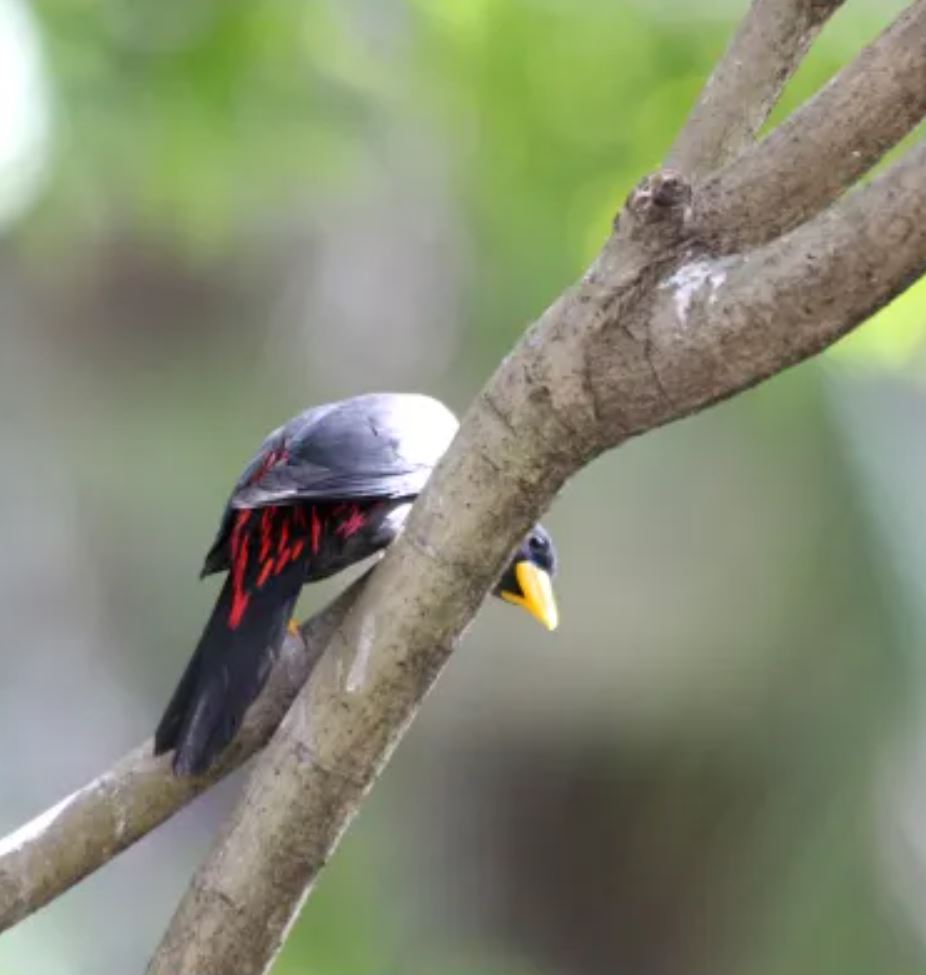 “File:Grosbeak starling (8554610706).jpg” (cropped) by cuatrok77 is licensed under CC BY 2.0.
“File:Grosbeak starling (8554610706).jpg” (cropped) by cuatrok77 is licensed under CC BY 2.0.
This species is primarily a frugivore, feeding on fruits, seeds, and insects. It can be quite raucous while foraging in flocks, especially during the courtship displays.
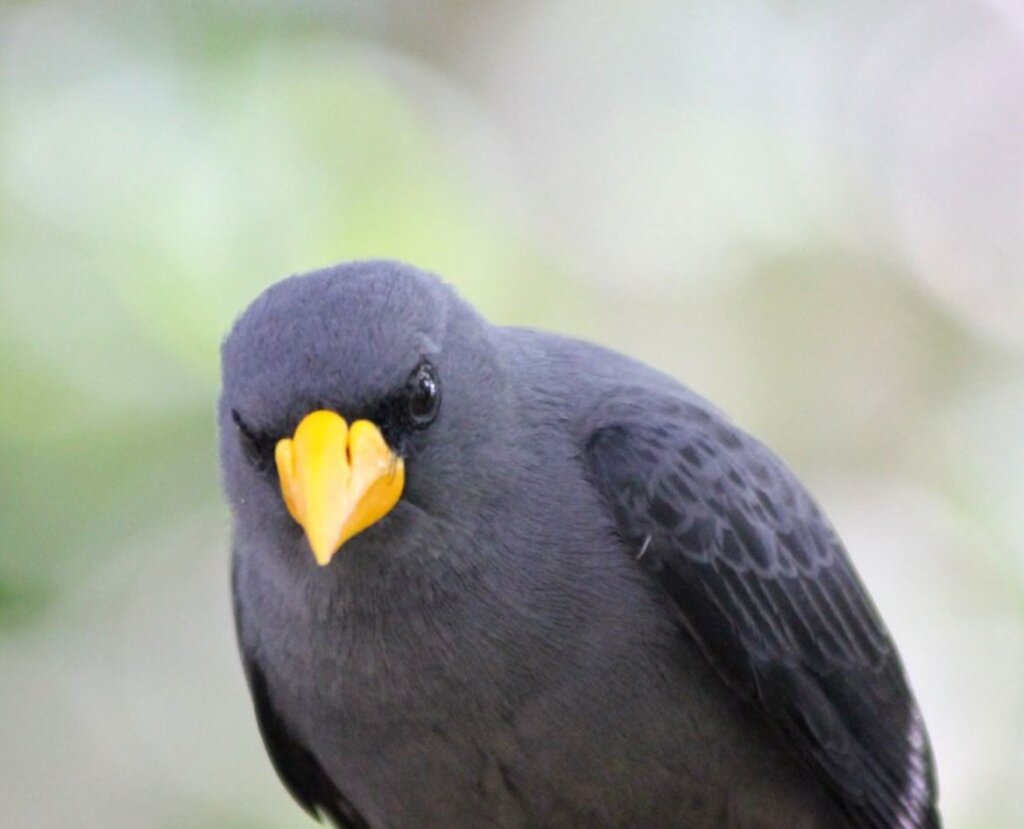 “grosbeak starling” (cropped) by cuatrok77 is licensed under CC BY-SA 2.0.
“grosbeak starling” (cropped) by cuatrok77 is licensed under CC BY-SA 2.0.
Males demonstrate courtship rituals accompanied by song, wooing females with a series of chuckling notes and whistles while raising and lowering their bills and fluffing their throat feathers.
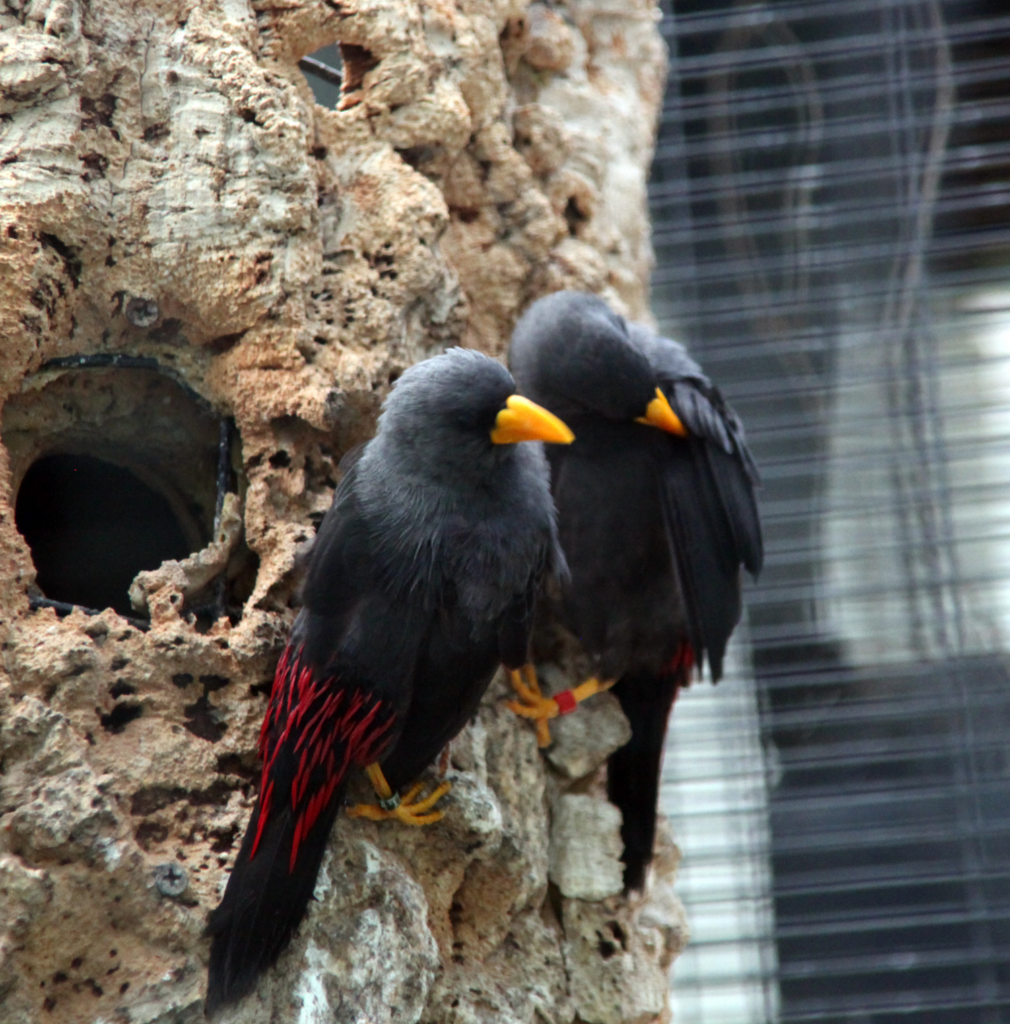 “File:Scissirostrum dubium -San Diego Zoo, California, USA -two-8a (1).jpg” by Tim from Washington, D.C., United States of America is licensed under CC BY-SA 2.0.
“File:Scissirostrum dubium -San Diego Zoo, California, USA -two-8a (1).jpg” by Tim from Washington, D.C., United States of America is licensed under CC BY-SA 2.0.
Breeding colonies of the Grosbeak Starling are quite impressive, housing numerous nests that are excavated in a woodpecker-like fashion within rotten or dying tree trunks. Each pair defends its territory around the nest site, engaging in mutual preening and shared activities. Incubation of the 2 pale blue eggs with pale and dark brown markings is performed by both adults, and the chicks are fed by regurgitation. The nesting period lasts around 21-23 days.
 “Sturnidae Scissirostrum dubium 2” by NasserHalaweh is licensed under CC BY-SA 4.0.
“Sturnidae Scissirostrum dubium 2” by NasserHalaweh is licensed under CC BY-SA 4.0.
Although common and widespread throughout its range, the Grosbeak Starling faces threats due to habitat destruction and fragmentation, which can lead to the loss of nesting sites. Despite these challenges, the species is currently considered of Least Concern status and can be found in several protected areas, with breeding success also observed in captivity.
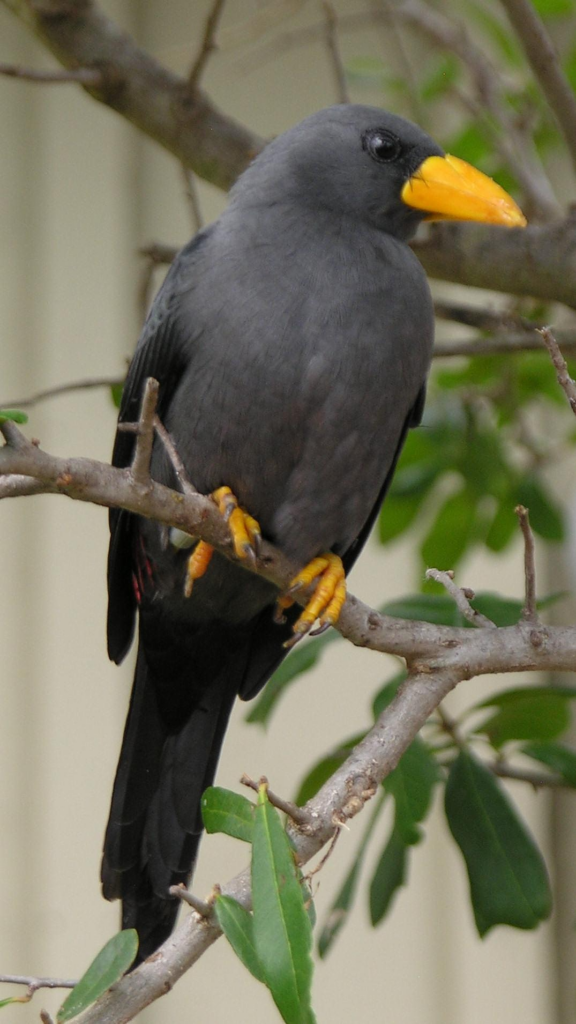 “Scissirostrum dubium -Dallas Zoo, Texas, USA-8a” by Greg Goebel from Loveland CO, USA is licensed under CC BY-SA 2.0.
“Scissirostrum dubium -Dallas Zoo, Texas, USA-8a” by Greg Goebel from Loveland CO, USA is licensed under CC BY-SA 2.0.
Listen to these highly talkative birds right here:
This article uses material from Wikipedia.org which is licensed under the GNU Free Documentation License via Copyright Wikipedia. Images on this page are the sole property of the photographers (unless marked as Public Domain). Please read the license and or contact the photographers directly before using them for any purpose. Thank you all.
A Tiny Ball Of Flame Clothed In A Stunning Array Of Color!
Please SHARE this article with all your bird-loving friends and family.

